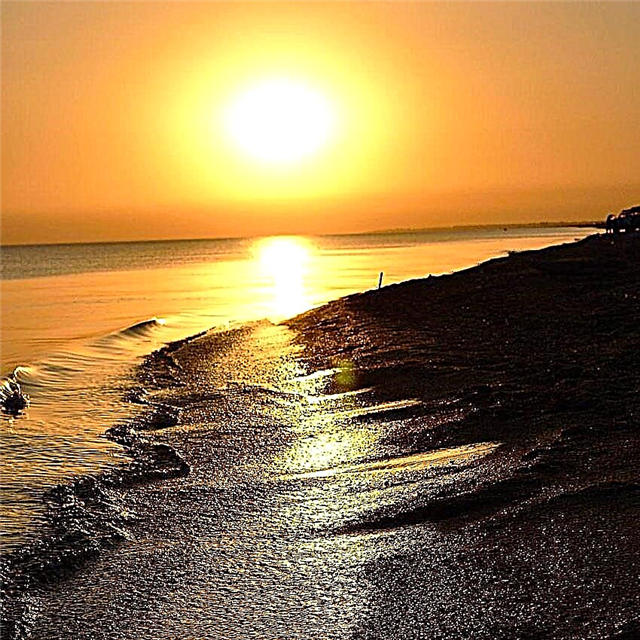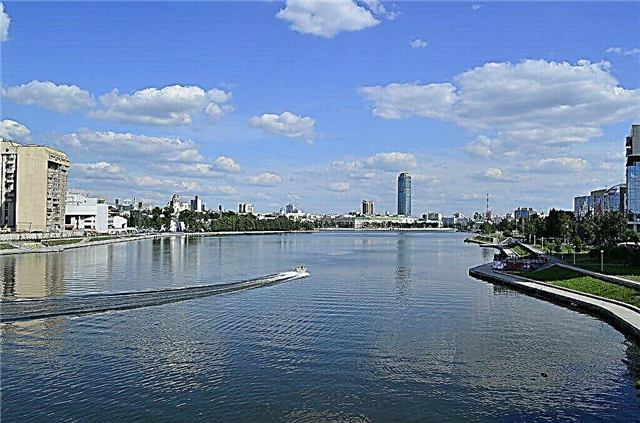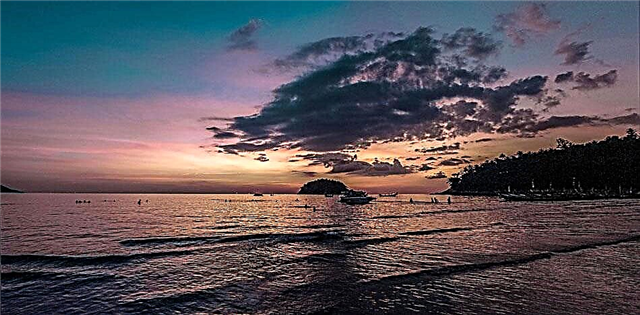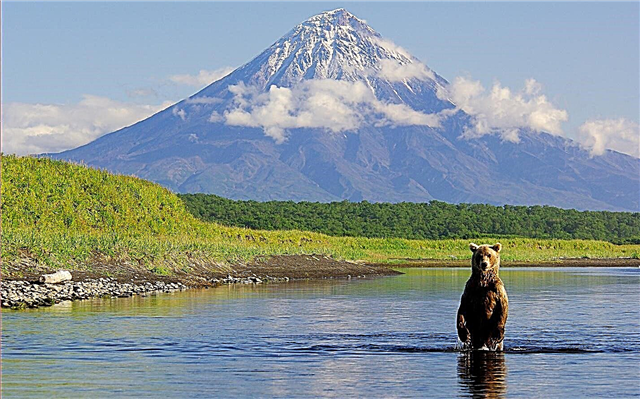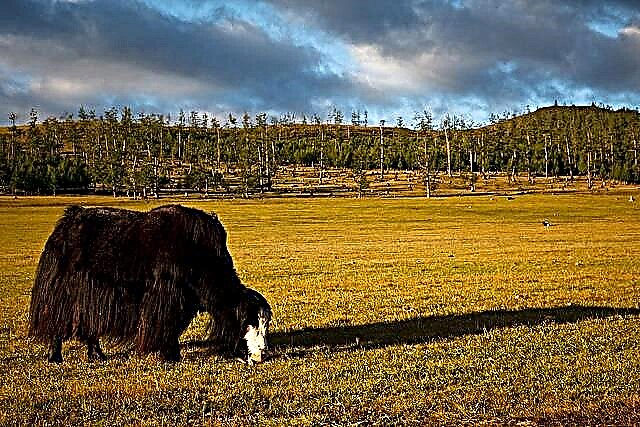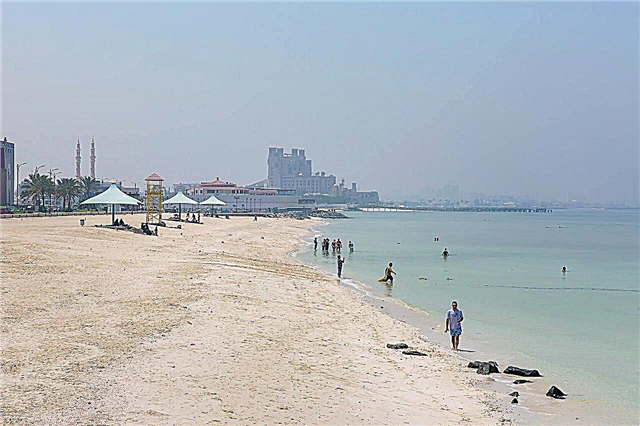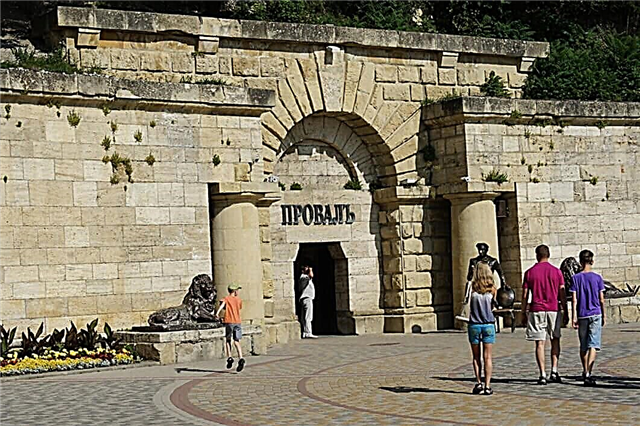Sights are mostly concentrated in several relatively large cities: Stavropol, Yessentuki, Kislovodsk, Zheleznovodsk and Pyatigorsk. Natural beauties interspersed with human creations. For example, there are many interesting man-made places in the Kislovodsk National Park. Cable cars help not only easily climb the mountains, but also explore the surroundings.
The region is strongly associated with the memory of Lermontov, who was killed here in a duel. The museum is dedicated to the outstanding poet and prose writer, parks, grottoes and so on are named in his honor. Mineral waters are one of the features of the Stavropol Territory. Everyone can come to the springs and taste any of the varieties of mineral water. It is advisable to consult a doctor before this.
The most interesting and beautiful places in the region
List, photos with names and descriptions of popular attractions!
Kislovodsk National Park
Founded in 2016 on an area of more than 965 thousand hectares. Until that time it was a spa park. Sightseeing: the natural monument Red stones, tuyevo and birch alleys in honor of memorable events, a cable car, a Lermontov gazebo, a flower calendar and a clock, the Horseshoe pavilion-museum, a rope town, etc. A special therapeutic walking route called terrenkur has been laid.

Lake Proval
The unique natural site is located on the southern slope of Mashuk in Pyatigorsk. Under the influence of mineral waters, an underground cave was formed, and then hydrogen sulfide destroyed the rock, and a funnel 15 meters in diameter appeared, which became a lake. The depth is about 11 meters. A convenient entrance was made, a sculpture of Ostap Bender was installed not far from it. The tunnel inside is illuminated up to the descent to the deep blue water.

Lake Tambukan
Located near Pyatigorsk. The area is 170 hectares, the average depth is about 2 m. Its mud is considered curative and is not inferior in characteristics to the deposits of the Dead Sea. Although the water from the lake cannot be consumed, it is suitable for a short swim. At the same time, a specific smell can be a repulsive factor for tourists. There are no fish and no birds to nest here.

Beshtau
The mountain range, which is a five-domed mountain, is located in the south of the region. The peaks have separate names: Big Tau, Small Tau, Goat rocks, Shaggy, Fox nose, otherwise called Two brothers. Height - up to 1400 m. The mountain is rich in minerals, including uranium ores, and mineral springs. Recognized as a natural monument. A monastery was built on the southwestern slope.

Sculpture of the Eagle in Pyatigorsk
Installed in 1901 in honor of the centenary of Pyatigorsk. The very first eagle was made of cement and had to be restored from time to time. In 1973, exactly the same bronze bird was cast. The eagle clutches a snake in its claws. According to legend, the reptile stung the feathered when he was not expecting. However, he was able to get to the source, drink healing water and wash the wound, so he survived.

Mountain Ring
It is located on the outskirts of Kislovodsk and is a natural monument. Height above sea level - 871 m, above its own base - 100 m. The rock formation with rounded depressions and voids appeared due to soil erosion and winds. The eight-meter opening is especially prominent. From the top point, among other things, a panoramic view of the surrounding area opens. Part of the Lermontov Museum-Reserve.

Main Narzan Baths
Built for the centenary of Kislovodsk in the first years of the last century. The complex is recognized as an architectural monument. The decoration contains Indian motives (lotuses, shikhara). Inside was everything needed for a spa treatment. Gradually, the total number of baths increased to 88. In 2018, after the restoration, due to which some parts have lost their former appearance, the building was transferred to the hotel.

Narzan Gallery of Kislovodsk
It is part of the national park. The architectural monument was built in the middle of the 19th century. Initially, it was a well made of wood, surrounded by a fence. Subsequently, a beautiful capturing appeared, which has survived to this day. The gallery has a wide selection of narzans. They differ in composition as well as in temperature. Walking areas have been created around and there is a brisk trade in souvenir products.

Mount Mashuk
The natural monument belongs to the southeastern part of Pyatigorsk. Height - about 993 m. From the top of the mountain, a view of the surrounding area opens up. There are also poles with planks nailed to them - these are pointers: on each is written the name of the city and the distance to it. You can get here on foot, or using the toll cable car. One of the sights is the 1925 rock portrait of Lenin.

Pyatigorsk cable car
The idea for its creation began to be implemented in 1965. The length is a little less than a kilometer. The design differs from most cable cars in the absence of intermediate supports. Two cabins with a capacity of up to 20 people each can be on the route at the same time. During a short trip (about 3 minutes) you can look around. Especially picturesque views open up on the left side.

Gazebo "Aeolian Harp"
Built in the early 30s of the XIX century on the Mikhailovsky spur of Mount Mashuk. For 30 years, there was an original harp inside that turned and made sounds in windy weather. Later, a similar instrument was installed on the gazebo, and now it has been replaced by modern stylized equipment that does not depend on the wind. It is considered one of the best viewing platforms in the vicinity of Pyatigorsk.

M. Yu. Lermontov Museum-Reserve
It was founded in 1912 in the house where the writer lived the last months of his life and worked hard. His body was brought here after the duel. The interior has preserved the living environment, including a particularly valuable work table. The collection is divided into 4 parts, which cover not only the biography of Lermontov, but also touch on related topics, for example, his display in the visual arts.

Lermontov's grotto
It is located in Pyatigorsk and was decorated in its current form in 1829. Although it is of natural origin, the cave was deepened during the improvement. It began to be called Lermontov's grotto in the 60s of the XIX century, and before that it was called "Calypso". History ascribes to the writer a love of visiting these places. There was another grotto nearby - Small, but it collapsed, only ruins remained.

Place of Lermontov's duel
A glade on the slope of Mashuk, where a writer died in July 1841. Belongs to the territory of the Lermontov Museum-Reserve. The permanent monument appeared in 1915. It is an obelisk with a wider lower part, where the bust of Mikhail Yuryevich is built in. A fence of posts and massive chains is installed around, and vultures sit in the corners. Height - 8.3 m, material - dolomite, bronze and concrete.

Fountain "Gnomes" in Pyatigorsk
Also referred to as "Fairy Tale" or "Grandfathers". After the construction of a new water supply system in the city, the first fountain appeared in the park. The pressure of the water was powerful, and the appearance was dull. In 1910, a full-fledged composition of a stone mountain and 8 gnomes who guarded it were erected here. During the Second World War, the fountain was partially destroyed, it took 5 years to restore. Now the area around is one of the favorite places of recreation for the townspeople.

Museum-reserve "Tatar settlement"
Simultaneously refers to archaeological and natural. It is located near Stavropol and has held its current status since 1992. The area is about 200 hectares. The settlement was founded no later than the 8th century BC. Burial grounds, traces of ancient roads, subtle ruins of structures and other objects have not yet been fully explored.Excursions are led to them, depending on the interests of tourists, the details of the routes also differ.

Essentuki mud baths
Built in the first half of the 20th century. Bears the name Semashko. Refers to architectural monuments. The style is antique neoclassicism, and the authors drew inspiration from the ancient Roman Baths. 4 two-storey buildings are connected into one whole. The mud of the Tambukan Lake is used for the procedures. All conditions for its storage and heating are created in the basement. The hospital simultaneously accepts more than 200 people.

Resort park in Essentuki
Construction began in 1848. One of the distinctive features is that in the park you can drink mineral water from wells No. 4 and No. 17 for free and without restrictions. The shady alleys are popular among holidaymakers. In the younger part of the park, parties and discos are held. Notable objects: the building of mechanotherapy, the gazebo "Accidental Encounters", fountains, the Upper Nikolaev baths and so on.

Palace of the Emir of Bukhara in Zheleznovodsk
Located on the territory of the resort park of the city of Zheleznovodsk. The palace ensemble was built at the beginning of the 20th century. The architectural style is pseudo-Moorish with layers of other styles. Soon after the construction, the palace was transferred to a sanatorium, and then to an infirmary. It is currently rented by private individuals and will remain a hotel for the next 49 years.

See also: What to see and where to go in Zheleznovodsk?
Mountain Snake
Belongs to Pyatigorye, has a height of 994 m. The natural monument received this name because of the large number of ravines and ditches. From a distance they looked like snakes. Since minerals were mined here, the terrain has changed. Sightseeing: monuments from the Second World War, two holy springs, excavations of a stone structure not younger than the 9th century. The mountain is popular with outdoor enthusiasts: the ascents here are not easy.

Drinking gallery "Five-thousanders" in Essentuki
Built in 1990 and belongs to the territory of "Victoria", but guests of the sanatorium can not visit. One of the largest natural mineral water galleries in Europe. The name refers to the capacity. You can try both cold and hot "Essentuki-4", "Essentuki-17" and other varieties. It is better to discuss the dosage with your doctor beforehand. On the second floor there is a greenhouse where exhibitions are held.

Zheleznovodsk resort park
It was created in the 20s of the XIX century. Located on the slope of Mount Zheleznaya, the local forest-park area is of natural origin. The area is about 210 hectares. Sightseeing: pump rooms of different years of construction, Pushkin gallery, chess pavilion, musical arbor and so on. There are benches, sculptures, flower beds throughout the park. Wellness hiking trails have been laid.

Healing springs of Zheleznovodsk
They have been mentioned since 1793, and a couple of decades later they began to be actively used for prevention and treatment. Now there are 23 known healing springs. Health resorts with modern equipment and professional teams of doctors have been built around them. 3 springs are in the public domain for everyone: Lermontovsky (the oldest), Slavyanovsky (one of the hottest) and Smirnovsky.

Castle of deceit and love
The mountain has a height above sea level of 950 m, and from its own base - 80 m. It is located in the vicinity of Kislovodsk. The name is associated with the legend of the love of a prince's daughter and a shepherd. He was not afraid to die for his feeling, but at the last moment she retreated, but she never found happiness. Nearby there is a hotel with a restaurant, stylized as a castle. Only guests can enter this territory and look around.

Stavropol Museum of Local Lore
Year of foundation - 1905. The collection is based on archaeological and ethnographic finds. In 25 years, an educational museum will be added to the main local history profile. The exposition is located in the former shopping arcade. The remains of animals and ancient people stored here are typical for most of the Caucasus. The collection of weapons, examples of poster art, numismatics, etc. is also impressive.

Stavropol Museum of Fine Arts
Received the first visitors in 1962. The only museum of this kind in the region. The collection is extensive and not very limited. It presents works of art of different styles, foreign and domestic masters, covering the time period from the 5th century BC to the present. The exposition is distributed over the halls of three buildings, connected into a single ensemble. An educational program has been developed for children.

Kislovodsk cable car
Started working in 1973. Length - 1743 m. There are 2 cabins on the route at the same time. During the trip, you can explore the surroundings and plan a further route. Elbrus is visible from the highest point in good weather. Different seasons - different experiences of the cable car. Where the trailers are in close contact with the tops of pine trees, it always smells like pine needles.

St. George Monastery
Founded in 2006 in Essentuki. The nunnery includes a temple around which the cloister was built, household buildings, two chapels, a bathhouse with access to holy water, an icon shop, and an orphanage for girls. The facade is decorated with white marble, the peculiarity of the interior decoration is the Star of Bethlehem embedded in the floor. The shrines are a particle of the relics and tunic of George the Victorious.

Chaliapin's dacha in Kislovodsk
It got its name very conditionally, since the singer did not have a permanent dacha in the Caucasus, but he often came here. The building was built in the early years of the 20th century. The rooms have partially preserved or restored the interiors of that time. The museum located inside is literary and musical and hosts thematic events. There are many rare and ancient books among the exhibits.

Tersk stud farm
Founded at Mount Zmeyka in 1889. The first horses were purchased from Syria and the North Arabian Desert. Was ravaged during the Civil War and later revived as a state. In the mid-2000s, it became private again. Shows and stages of championships are held, there are open days. The stallions and mares bred here, as well as their offspring sent abroad, win titles at various competitions and shows.



